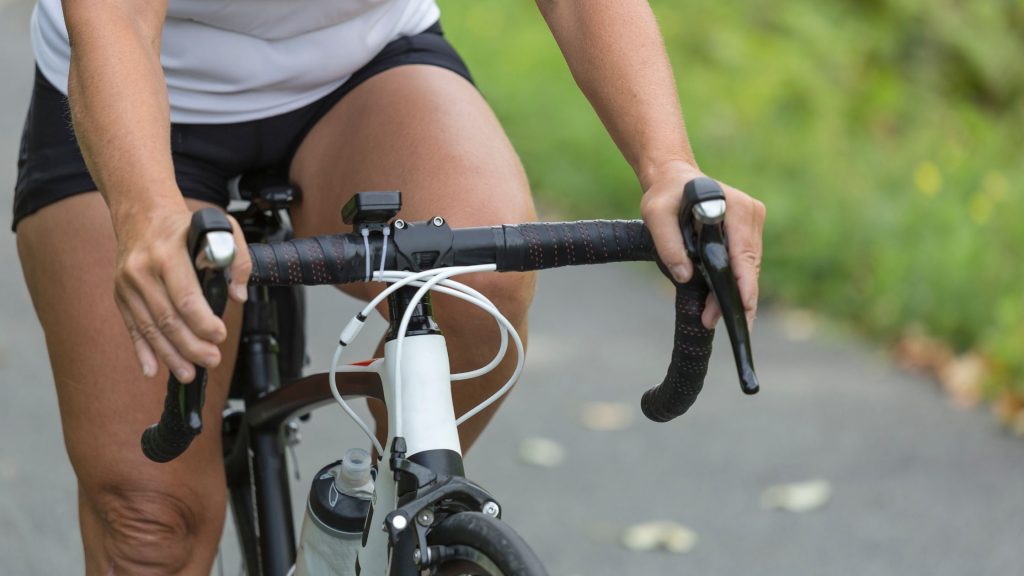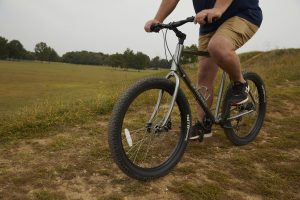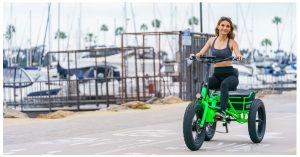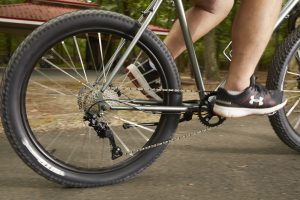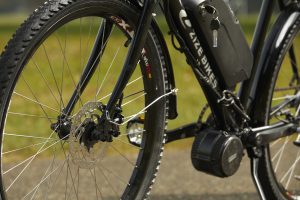When it comes to your bicycle, be it an e-bike, mountain bike, or road bike choosing the handlebar that suits your style and comfort is crucial. The type of handlebar that best fits your riding requirements plays a vital role. Even if you have no plans to make any alterations, it’s wise to make sure that your handlebar aligns with your riding style. This not only improves endurance and minimizes fatigue but also reduces the risk of potential injuries in many scenarios.
Get ready to dive into the epic battle of Drop Bars vs. Flat Bars! Uncover the advantages and disadvantages that will transform your cycling journey.
What are Drop Bars?
Drop bars are typically found on road bikes and were originally introduced in the 1880s on penny-farthing bikes. The purpose was to enhance the rider’s aerodynamics and increase cycling speeds. With time, the drop bar design was incorporated into modern bikes with improved safety features, like same-sized wheels and a chain mechanism. Nowadays, modern drop bars come with bar tape and brakes, providing five different hand positions. This allows for longer and more efficient rides, improving the overall cycling experience.
What are Flat Bars?
Mountain bikes typically come equipped with flat bars. This is because when riding off-road, you often need to make quick and significant changes in direction, like navigating berms or avoiding rocks and holes during steep descents. Flat bars allow you to shift your body position more easily, preventing fatigue from prolonged static positioning. While handlebar positioning is important, other factors should be considered when selecting the best handlebars for your bike and ride.
The Good of Flat Bars:
Flat bars give you much better control: When it comes to control flat bars are known for their advantages. The wider grip and upright positioning provide riders with excellent stability and precise handling. This allows for confident maneuvering through various terrains and better control over your bike.
- Flat bar components are cheaper
One of the perks of choosing flat bars is that they come with cost savings. Compared to other handlebar options, flat bar components tend to be more affordable. This affordability makes them an attractive choice for riders on a budget or those looking to customize their bikes without breaking the bank.
- Parts availability is great.
Finding replacement or upgrade parts for flat bars is typically hassle-free. Their popularity ensures a wide range of available components in most bike shops. You can easily find compatible parts to suit your preferences and needs, whether it’s grips, shifters, or brake levers.
- Changing cables is easy
Maintaining and adjusting your bike becomes simpler with flat bars. Changing cables, including brake and shifter cables, is relatively easy due to the straightforward cable routing on flat bar setups. This means you can quickly make necessary adjustments or replacements without hassle.
- Flat bars are more comfortable
The ergonomic design of flat bars prioritizes rider comfort. The natural, upright position they offer helps reduce strain on the back, wrists, and neck. Flat bars are popular for longer rides, commuting, and leisure cycling, where comfort is key to an enjoyable experience.
- Better visibility
The straight and unobstructed view provided by flat bars is advantageous for visibility on the road. With a more upright riding position, riders have better sightlines and can easily spot traffic, pedestrians, and obstacles. This promotes safety and allows for quicker reactions in potentially hazardous situations.
The Bad of Flat Bars:
Flat bars require a wider gap to pass through: One thing to remember with flat bars is that they have a wider profile than drop bars. This means you may need to be cautious when maneuvering through tight spaces or narrow gaps, as the wider handlebars might pose a challenge. It’s important to ensure you have enough clearance to navigate comfortably.
- Flat bars are less aerodynamic
When it comes to aerodynamics, flat bars have their limitations. Unlike drop bars that allow for a more streamlined riding position, flat bars tend to create more wind resistance due to the upright positioning. This can impact your speed and efficiency, especially when riding at higher speeds or in windy conditions.
- Only one hand position
Unlike drop bars that provide multiple hand positions, flat bars generally offer a single hand position. This lack of variety can lead to hand fatigue and discomfort, particularly during long rides.
- Not a great option for climbing hills
When it comes to climbing hills, flat bars may not be as advantageous as other handlebar options. The upright position they provide can place more weight on your rear wheel, making it slightly harder to maintain traction and control while ascending steep inclines.
The Good of Drop Bar:
- Multiple hand positions
With multiple hand positions, drop bars allow you to switch and adjust your grip throughout the ride, minimizing fatigue and increasing comfort.
- Drops provide an aerodynamic advantage.
With the lower hand position on drop bars, known as the “drops,” you can attain a more aerodynamic posture, reducing wind resistance and boosting your overall speed. The streamlined shape of drop bars further enhances your ability to cut through the air efficiently, making them the perfect choice for riders aiming to maximize their performance on the road or during competitive races.
- Narrower than most flat handlebars
Drop bars have another advantage—their narrower profile. This means you can effortlessly navigate through tight spaces and narrow trails, enjoying improved maneuverability on your rides.
- Drops are more efficient
These bars are crafted to align your body and arms perfectly, optimizing power transfer during pedaling. But that’s not all—drop bars also offer an extended reach, allowing you to stretch out and engage various muscle groups.
- Drop bars look cool
Let’s face it—drop bars bring a stylish and sleek appearance that adds a touch of sophistication to your bike’s aesthetics. With their distinctive shape and professional look, they have the power to make you feel like a seasoned cyclist.
The Bad of Drop Bars:
- Brake lever position
When it comes to drop bars, the lower position of the brake levers offers riders quick and efficient access to the brakes—a definite advantage.
- Less control than flat bars when going slow
Due to their design, drop bars may provide slightly less control at slower speeds or when maneuvering through tight and technical sections. It’s worth considering that drop bars are primarily optimized for speed and aerodynamics, making them a popular choice for riders who prioritize faster riding.
- Less room for accessories
The narrower profile of drop bars may limit space for mounting accessories like lights, bells, or GPS devices. It’s all about finding the right handlebar style that suits your accessory needs and preferences.
- It can be hard to keep an eye on the traffic
When using drop bars, the lower hand position and forward-leaning posture may make it slightly more challenging to maintain a clear view of surrounding traffic and road conditions.
Drop Bars Vs. Flat Bars – Which is the Best Option?
The best handlebar option for larger individuals depends on personal preference, riding style, and comfort. It’s advisable to test both drop bars and flat handlebars to determine which option feels more natural and provides the desired level of comfort and control. Additionally, seeking guidance from a professional bike fitter can help ensure the handlebars are properly adjusted and optimized for your body type and riding needs.
Why do E-Bikes tend to have Flat Bars and rarely Drop Bars?
E-bikes usually have flat bars instead of drop bars for a simpler reason: practicality. Flat bars provide a more upright riding position, which offers better control and visibility, making them well-suited for e-bike riders who prioritize comfort and ease of handling. Drop bars, on the other hand, are more commonly found on road bikes, where aerodynamics and speed are the main focus.
Conclusion
In conclusion, the preference for flat handlebars over drop bars is driven by factors such as control, comfort, and versatility. Many riders appreciate the wider grip and enhanced stability offered by flat handlebars, especially during off-road or technical riding. The upright riding position of flat handlebars also provides a more comfortable experience, reducing strain on the body. If you’re looking for bikes designed specifically for larger individuals, Zize Bikes offers a range of options tailored to accommodate different body sizes and shapes, ensuring a comfortable and enjoyable ride.

